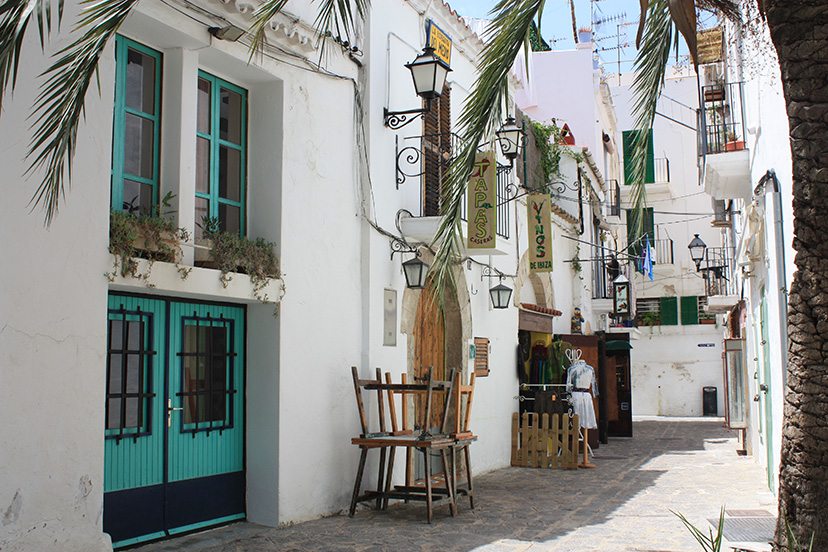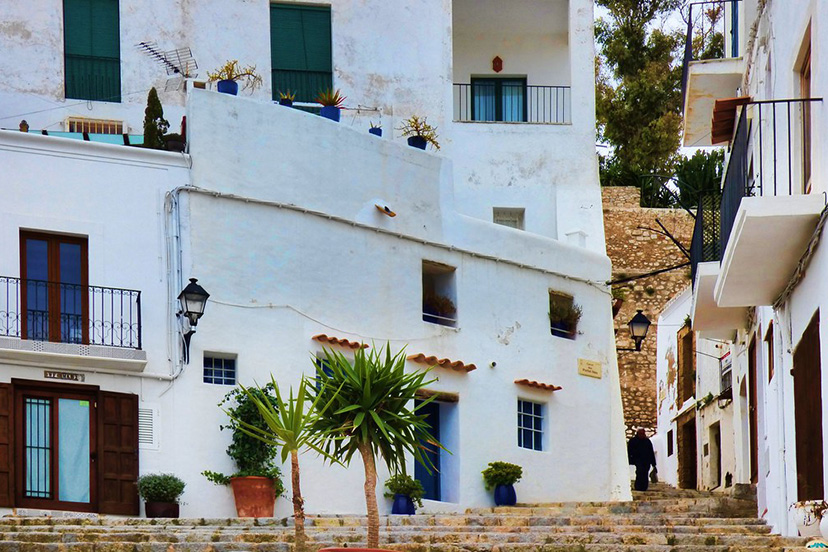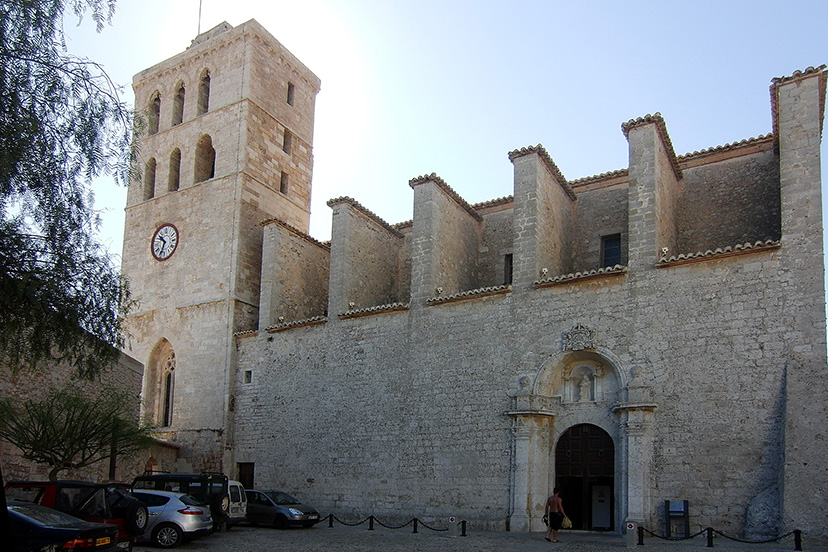A tour of Ibiza would not be complete without visiting the neighbourhoods of La Marina and the Port, where decades ago the legend of an island that today represents one of the most important brands in the world and one of the most desirable destinations on the planet began to take shape. Its beauty, typical of the coastal cities of the Mediterranean, whose most prominent features are the white houses, narrow streets and roofs weathered by time, also has the aroma of salt and the smoke of old chimneys which, in turn, are home to the neighbourhood with the most nightlife in the whole city. An almost dreamlike scene at the foot of the Renaissance walls of Dalt Vila, declared a World Heritage Site by UNESCO 20 years ago.
There are many entrances to the Port of Ibiza, although the most commonly used is via Calle Luis Tur y Palau, the closest to the sea, which houses numerous jetties where it is not surprising to bump into some of the most famous people in the world. If you go from Vara de Rey to this harbour, full of big yachts in summer but where you can also take small boats to go to other parts of the city or to Formentera, you will be welcomed by the statue of homage to the hippy culture that recreates a famous Toni Riera photograph depicting a father and his daughter.
A stone’s throw away you come to an imposing red façade, the Bar Can Pou building, which claims to be the oldest café on the whole island and which on some summer nights offers live music concerts inside. From there, you can stroll around and discover a wide range of restaurants, stores and diverse nooks and crannies full of wonderful shops, all of which are highly recommended.
In fact, the cuisine is one of the strong points of this neighbourhood, with a highly varied choice and prices, ranging from the simplicity of what was the first pizzeria in the city to avant-garde cuisine that includes high-quality seafood and meat from the island.
A visit to the Port also requires a stroll along Calle de la Virgen, the birthplace of Ibiza’s LGTBI community and today home to some of the city’s most famous bars and pubs, as well as designer shops open during the day. Its relaxed and cosmopolitan atmosphere continues from dusk until the early hours of the morning and it is very common to see some of the dancers who will later provide entertainment in some of the world’s most important nightclubs.
Finally, we recommend a stroll through the Plaza de la Tertulia, towards the Church of San Telmo, the most nautical parish of the city, which on 16 July every year celebrates the day of the patron saint of seafarers, the Virgen del Carmen, with a moving procession on land and aboard a boat. The last stop will be in the Plaza de la Constitución to admire the outstanding views of the Portal de Ses Taules, the main entrance to the walled citadel of Dalt Vila, where another story begins.


